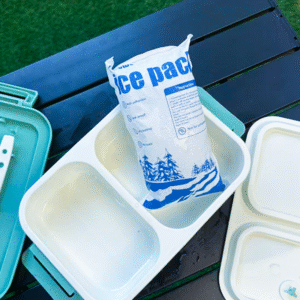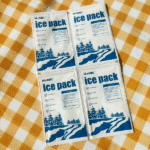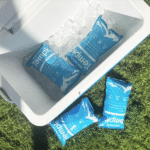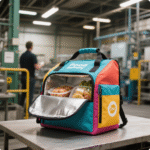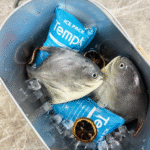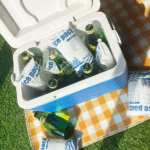Sale Dry Ice Pack Sheet: Ship Colder, Safer in 2025
Updated October 2025. If you need dependable temperature control, a sale dry ice pack sheet gives you flexible, reusable cooling without hazmat complexity. In this guide, you’ll size it correctly, pack it safely, and decide when to pair it with real CO₂ dry ice or PCMs. We fused the strongest ideas from your three internal drafts and aligned them with 2025 on‑page SEO best practices.
-
What a sale dry ice pack sheet really is and when to use it for chilled/frozen lanes
-
How to size sheets for 24–72 hours, with a quick formula and table
-
Pack‑out steps and safety when combining sheets with real dry ice (UN 1845)
-
2025 trends shaping coolant choice: sustainability, sensors, and compliance
-
FAQs for buyers, from reuse and hygiene to labeling and international shipping
What does “sale dry ice pack sheet” mean—and which type do you need?
Short answer: A sale dry ice pack sheet is a hydrate‑to‑freeze polymer sheet you cut to size and reuse. It chills like ice, stays tidy, and stores dry. For deep‑freeze lanes (≈ −78.5 °C, multi‑day), use real dry ice and label/vent properly. For precise setpoints (e.g., 2–8 °C or −21 °C), use PCM packs.
From your buyer’s perspective: Sheets shine on 0–48 h e‑commerce lanes, grocery, meal kits, florals, and “must not freeze” health products. They reduce mess, fit odd shapes, and avoid hazmat paperwork. Real dry ice still wins when payloads must stay hard‑frozen for days.
Sale dry ice pack sheet vs. gel packs vs. real dry ice (quick compare)
| Cooling option | Typical temp range | Typical duration | What it means for you |
|---|---|---|---|
| Sale dry ice pack sheet | ≈ 0–4 °C (chilled) or short frozen | ~24–48 h (with good insulation) | Flexible, reusable, ships/stores dry; great for overnight lanes |
| Gel pack / wet ice | ≈ 0–5 °C | ~6–24 h | Lowest cost; can leak/sweat; shorter hold time |
| Real CO₂ dry ice (UN 1845) | ≈ −78.5 °C | 48–96 h+ (size & insulation dependent) | Deep‑freeze performance; Class 9 marking; vented packaging required |
Practical tips you can use today
-
Match the lane, not the myth: Don’t treat sheets like CO₂ dry ice; they’re different tools.
-
Fill voids, reduce air gaps: Cut sheets to wrap surfaces; fewer hot spots, longer hold.
-
Upgrade insulation first: Better R‑value often cuts sheet count by 10–30%.
-
Log and learn: Use a simple temp logger; tune your pack‑out in two or three trials.
Real case: A regional seafood shipper wrapped fillets with two sheets in a 12 L EPS shipper and held ≤ 2 °C for 36 h. In summer, they added a third sheet and kraft paper to manage surface condensation; complaints dropped to near zero.
How do you size a sale dry ice pack sheet for 24–72 hours?
Direct answer: Start from payload mass, route hours, ambient risk, and insulation quality. For day‑long chilled lanes, begin with 1 sheet per 5–8 L box volume, then add 20–30% margin for heat spikes. Use more sheets or add PCMs/CO₂ for longer or colder lanes.
Why this works: Cooling capacity tracks with hydrated mass and contact area. Good fit (less air) beats “more coolant.” Always validate with a logger before peak season.
Quick sizing formula you can test this week
| Payload (approx.) | Route & ambient | Suggested sheets | Your benefit |
|---|---|---|---|
| 5–8 L (snacks, kits) | ≤ 24 h, mild | 1–2 | Simple, low cost, chilled delivery |
| 10–15 L (meals, dairy) | 24–36 h, warm | 2–3 | Steadier temps; fewer returns |
| 20–25 L (meat/seafood) | 36–48 h, hot | 3–4 + better liner | Manage heat spikes confidently |
| 30 L+ frozen desserts | 48–72 h | Sheets + PCM or CO₂ | Deep‑freeze reliability |
Hands‑on guide (pack‑out sequence)
-
Hydrate sheets in clean water until cells fully swell; gently press to release air.
-
Pat dry; freeze flat on trays for 24–48 h for even performance.
-
Pre‑cool the shipper and product when possible.
-
Layering: liner → sheet → payload → sheet → void‑fill → close/label.
-
Log temps for continuous improvement; keep a simple “recipe card” by lane.
How do you prepare and pack a sale dry ice pack sheet safely?
Key points: Wear gloves when handling extreme cold. Vent packages if you add real dry ice. Keep sheets clean and food‑contact safe. Add a moisture barrier (paper/liner) to protect cartons from condensation.
Compliance snapshot for 2025 (plain language)
-
Sheets & most PCMs: Typically non‑hazardous; follow SDS and good hygiene.
-
Real CO₂ dry ice: Class 9 UN 1845; use hazard label/marking and vented packaging; follow carrier limits.
-
Workplace CO₂ safety: Ventilate pack rooms when using dry ice; train staff on frostbite risks and safe disposal.
Pro tips that reduce risk and cost
-
Freeze flat, not folded: Avoid “bridging” and uneven contact.
-
Protect sensitive goods: Add a barrier between sheet and delicate cartons.
-
Don’t over‑pack: Extra insulation sometimes saves more than extra coolant.
-
Document your SOP: A one‑page checklist keeps seasonal staff on track.
2025 sale dry ice pack sheet trends that change buying decisions
Trend overview: Buyers are shifting routine sale dry ice pack sheet use to reduce plastic waste and avoid hazmat steps, while reserving CO₂ dry ice for deep‑freeze or multi‑day frozen lanes. Smart tags and low‑cost loggers make validation easy. Materials are improving, so lighter liners deliver the same hold times with fewer sheets.
What’s new (and why it matters)
-
Smarter validation: Inexpensive loggers make pack‑outs data‑driven, not guesswork.
-
Sustainable moves: Recyclable liners and take‑back programs trim waste and costs.
-
Setpoint precision: PCM options at 2–8 °C and −21 °C reduce over‑cooling and damage.
Market insight: Expect continued growth in meal kits, last‑mile grocery, and specialty pharma—routes where sale dry ice pack sheet solutions cut spills, simplify ops, and scale quickly.
Sale dry ice pack sheet FAQ
1) How long will a sale dry ice pack sheet keep items cold?
About 24–48 hours in a well‑insulated shipper. Log a test on your lane and adjust sheet count or insulation.
2) Is a sale dry ice pack sheet the same as real dry ice?
No. Sheets are hydrated polymers you freeze and reuse. Dry ice is solid CO₂ (≈ −78.5 °C) with hazmat rules.
3) Can I cut sheets to fit my box?
Yes. Cut between cells to wrap products and remove voids for longer hold.
4) Do I need special labels?
For sheets alone, no special hazmat labels. If you add CO₂ dry ice, use Class 9 UN 1845 marking and vent packaging.
5) What about food contact and hygiene?
Use clean water to hydrate, keep surfaces sanitary, and add a paper or film barrier where needed.
6) When should I use PCMs instead?
If you need 2–8 °C or −21 °C precisely—especially for audited health lanes—PCMs are ideal.
Summary & next steps
In short: A sale dry ice pack sheet is your flexible, reusable choice for 0–48 h chilled or short frozen lanes. For multi‑day deep‑freeze, switch to CO₂ dry ice; for strict 2–8 °C or −21 °C, select PCMs. Size by volume and route, improve insulation before adding coolant, and validate with a logger.
Do this next:
-
Map lanes by temp and hours.
-
Pilot 2–3 pack‑outs (sheet counts and liner types).
-
Lock the cheapest recipe that meets your quality floor.
-
Document a one‑page SOP; train before peak.
CTA: Ready to spec your lane? Contact Tempk for a tailored pack‑out and sample kit.
About Tempk
We design practical, data‑driven cold‑chain systems—from sale dry ice pack sheet options to PCMs and liners—that reduce spoilage and simplify compliance. Our team helps you choose the lightest, lowest‑cost recipe that still passes your lane audits. Two advantages: rapid prototyping with real‑world loggers, and packaging that balances sustainability with performance.
Let’s talk: Get a no‑cost pack‑out review and sample plan for your top lane.






